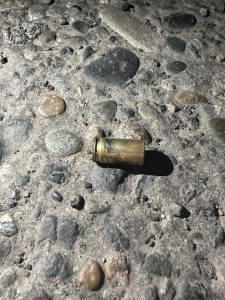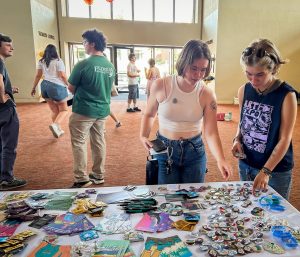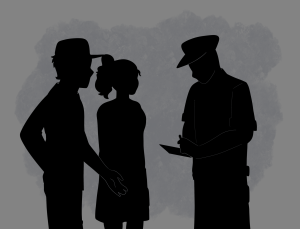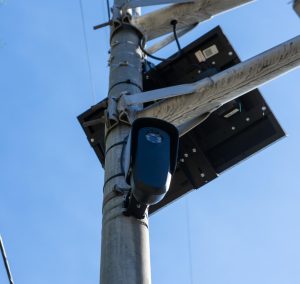Washington state colleges devise institution-specific COVID-19 plans
October 1, 2020
Washington State Governor Jay Inslee released a proclamation on June 24, mandating that each higher education institution create an institution-specific plan while meeting certain safety requirements. Some of the requirements include limiting dining facilities capacity, developing contact-tracing protocols, limiting visitors to campus, creating new protections for workers and creating self-health certifications for those on campus.
“We know each campus of these institutions are different. They vary in size and programs and location,” Inslee said.
With the exception of Whitman College and Bellevue University, all four-year higher education institutions in Washington state have chosen to have some portion of classes in person. Large institutions like Western Washington University (WWU) have chosen to offer a very limited number of classes with face-to-face instruction. Classes with in-person instruction elements make up only 8–10 percent of classes offered at WWU this quarter, according to the university’s website.
Some smaller schools have decided to bring more students back to campus and into the classroom. Whitworth University in Spokane — with an enrollment of 2,300 students — is the only four-year higher education institution in Washington to offer in-person instruction to all students and fill the residential halls to capacity. Whitworth calls its approach WhitworthFLEX and it allows for additional safety measures if there is an outbreak on campus or the surrounding areas.
Saint Martin’s College in Lacey and Northwest University in Kirkland have chosen a hybrid instruction approach. Residence halls are limited to half-capacity and students were given the choice to join classes digitally or in person. At Northwest University, Larger classes are split into sections and each section meets for in-person instruction on different days.
The University of Washington, University of Puget Sound and several other institutions offer free testing to all students arriving on campus. Some schools, like Gonzaga University in Spokane, offer testing through their health centers, while other universities rely on community health services. Whitman offers a mix of both: asymptomatic community members can receive free tests at the Welty Health Center while those with COVID-19 symptoms are referred to Providence Hospital.
Gov. Inslee’s mandate did not require that all students get tested when they arrive on campus. Washington State University (WSU) — the first state university to begin instruction — choose to test students returning to Pullman over the course of a month. After case numbers among students grew through late August, WSU took new measures to increase testing, partnering with the National Guard for mobile testing near off-campus housing.
Before the school year started, the COVID-19 policies of large institutions were being put to the test. The University of Washington (UW) saw an outbreak linked to Greek life with over 150 students infected in 15 of the University’s 25 fraternity houses in the span of a month this summer. This outbreak accounts for over half of UW 296 cases, the most of any university in Washington state.
UW InterFraternity Council (IFC) President Erik Johnson said that because the fraternity houses are independently owned, the University and IFC cannot control who lives in the houses. Approximately 1,000 people lived in the fraternity houses this summer, down from the 1,500 that live in them during a regular quarter.
The IFC instituted a social moratorium on March 3, prohibiting all fraternity-sponsored social gatherings. On June 22, the Council implemented new guidelines limiting guests at the fraternity houses and moving new member recruitment online. The first 38 cases were announced 8 days later, on June 30.
In collaboration with UW, IFC has strengthened disciplinary measures. Johnson said that IFC has created a Google form available to the entire campus community to report infractions and increased collaboration with campus police.
“Events that do happen tend to be smaller and in live-out properties [a house that is not owned by the fraternity but occupied by fraternity members]” which makes parties more difficult for IFC to prevent.
Greek life and off-campus parties causing spikes in COVID-19 infections is not unique to UW. A cluster linked to the Sigma Nu chapter at the University of North Carolina Chapel Hill was one of the four that caused the university to abruptly close after just a week of classes.
WSU has also seen a spike in partying and greek life-related infections since students began to return to Pullman in August. The New York Times reports that infections of young people in Pullman are one of the fastest growing hot spots in the US in proportion to the population.
Like UW, Greek organizations at WSU instituted a social moratorium last spring that is still in effect. Leaders in WSU IFC and Panhellenic Council (PHC) and Multicultural Greek groups (MCG) developed a CORE policy to define COVID-19 safety expectations for each chapter.
CORE policy allows individuals to receive a pardon from disciplinary action if they comply with contact tracers.
Panhellenic Vice President of Public Relations at WSU Farrin Johnson said that while student organizations can make policies around COVID-19 safety, it is up to individual students to follow them.
“At the end of the day there are all these policies and resources that are put in place that they can communicate to the students, but the big thing right now is that students are understanding their personal impact with COVID-19, and understanding what things can I do to hold myself and my friends accountable,’” Johnson said. “Because at the end of the day you can have a club president or a chapter president telling you what to do, but they can’t have eyes on everyone at all times.”
Gov. Inslee travelled to Pullman on Sept. 8 to meet with student leaders. He linked Pullman’s outbreak to off campus parties.
“We hope when you return back to your colleges you have a little more safety and a little less ‘Animal House,’ because that’s what we need right now,” Inslee said.
Part of the surge in cases at WSU is among student athletes. 53 student athletes have been infected with COVID-19 since mid-August, bringing the test positivity rate to 3.5% among athletes.
This surge in athletics cases at WSU comes as the Pacific 12 athletics conference — which UW and WSU belong to — decided to go ahead with an abbreviated fall football schedule. Many schools rely on revenue from sports games and merchandise to support their athletics departments and have already made job cuts.
Washington student athletes in each athletic division have had their seasons canceled and postponed.
Maggie Gunnings, a junior on the soccer team at Northwest University, had her season postponed to the spring. Rather than reporting to campus early for preseason training like in years past, the soccer team began practicing at the beginning of the school year, with added safety precautions.
“There is a lot of pressure on universities in our conference right now to get their teams up and running, because we bring in money for the school,” Heltzer said “There’s a lot of pressure to keep our COVID-19 rates down.”
With semester schools approaching mid-term and quarter schools just beginning to welcome students back to campus, challenges like the concurrent influenza will continue to test each institution’s COVID-19 plan.






